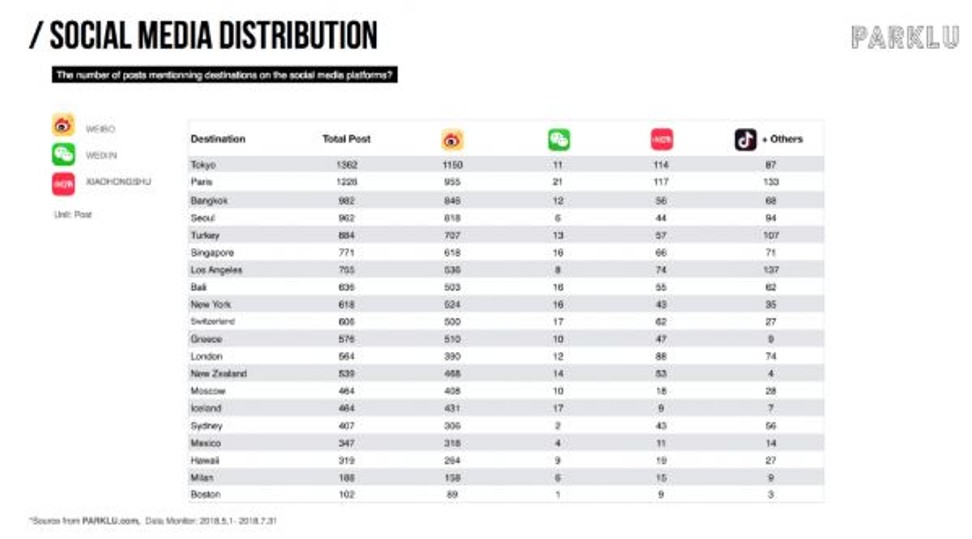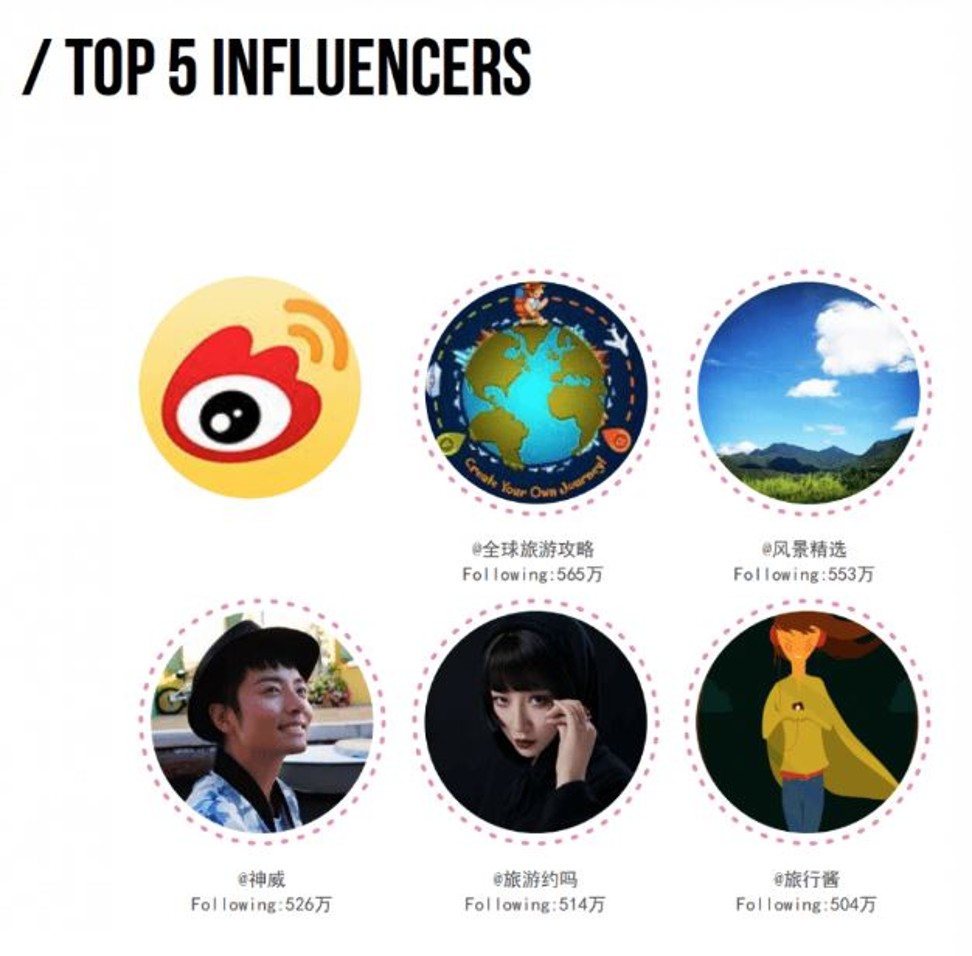Weibo vs WeChat: KOL report reveals what Chinese travellers use to pick holidays

This article was written by Ruonan Zheng and originally published in Jing Daily
Chinese travellers going abroad usually look for destinations that are WeChat-worthy to impress friends, but now a new report suggests that is now changing.
The travel influencer marketing report by ParkLu, the key opinion leader (KOL) agency – focusing on the social media content distribution of 30,000 influencers between May 1 and July 31 – found KOLs now favour Weibo, the mainland Chinese microblogging website, followed by the smaller rivals Little Red Book and Douyin, with the WeChat messaging app far behind.
So why has there been a change?
While WeChat is a global giant, travellers appear to prefer the bells and whistles offered by its social-media competitors.
With the busy seven-day Golden Week holiday roughly one month away, destinations, travel partners and luxury retailers may have to adjust their influencer strategies accordingly.
Tokyo, Paris and Los Angeles have been the top destinations so far this summer, with the generated media value of the three from the KOLs totalling US$19.8 million, US$13.5 million and US$13.27 million, respectively.
Based on the number of posts mentioning those destinations, Weibo dominated most conversations, followed by Little Red Book and Douyin, with WeChat ranked at the bottom.
ParkLu’s data suggest the top five influencers’ follower numbers on WeChat are significantly less than those on the other social media, which shows a shift in the type of social media platforms used by influencers.
The private nature of WeChat is a double-edged sword.
It ensures privacy as all posts from travellers can be seen only by their selected WeChat friends, and search results on WeChat are personally influential as they can be weighted based on friends.
However, the reach is limited compared with Weibo’s public posting option.
For travel influencers, the benefit of posting on Weibo is apparent – they can gain greater exposure. For example, a top performing post by a KOL named 呼吸像少年一样的猫 reached 360,000 people and gained 6,000 engagements.
In the post, the influencer showed in detail how to use OPPO’s phone to document her trip through Turkey, Japan and Xiamen.
In contrast, a top-performing travel post on WeChat reached a little over 100,000 users.
Little Red Book and Douyin outperformed WeChat thanks to their highly visual and searchable user-generated content.
For example, Little Red Book, born as a mix of Instagram and Yelp, started as a tool for consumers to access overseas products through first-hand pictures, recommendations and reviews.
It now has more outbound travel destination recommendations – a natural progression from its purely luxury product content.
While users rely on Little Red Book for trusted content, Douyin is a space to show off creativity.
The short-video app allows users to put their own spin on the destination they have visited by creating 15-second music videos. The content appears much more attractive than a picture on WeChat Moments.
Bali is the biggest winner – with lots of organic content from KOLs promoting this destination – as it went viral across social media with Little Red Book and Douyin picking up on the trend and pushing related user-generated content
In terms of location, the top searched destinations on Baidu were Iceland, Bali, in Indonesia, and Singapore, while Singapore, Bali and Paris ranked at the top on WeChat search.
Bali is the biggest winner – with lots of organic content from KOLs promoting this destination – as it went viral across social media with Little Red Book and Douyin picking up on the trend and pushing related user-generated content.
Another interesting observation is that, despite the huge fan base of top-tier KOLs, the mentions of destinations are contributed mostly by micro influencers.
So, instead of spending a large budget on the top influencers, brands can consider encouraging smaller KOLs in their social media strategy.
Besides working with KOLs, brands can also consider teaming up with online travel and house-booking agencies for relevant promotions; the top mentioned this summer were Mafengwo, Ctrip and Airbnb.
Want more stories like this? Sign up here. Follow STYLE on Facebook, Instagram and Twitter

Tokyo, Paris and Los Angeles top summer spots says ParkLu report that shows key opinion leaders’ moving from private to public platforms

